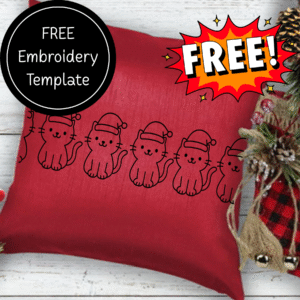

The Art of Needlework: Embroidery vs. Cross Stitch
When it comes to needlework, two popular techniques often come up: embroidery and cross stitch. While they may seem similar at first glance, these crafts have distinct characteristics that set them apart. Whether you’re a seasoned stitcher or a curious beginner, understanding the differences can help you choose which art form suits your creative needs best.
Embroidery: An Overview
Embroidery is a broad term that encompasses a variety of decorative stitching techniques. It involves stitching designs onto fabric using a needle and thread or yarn. The beauty of embroidery lies in its versatility and the range of stitches available, from simple to complex.
Techniques and Stitches:
- Running Stitch: Basic stitch used for outlining and filling.
- Backstitch: Creates a continuous line, often used for outlining.
- Satin Stitch: Provides a smooth, filled-in effect for shapes.
- French Knots: Add texture and dimension with small, raised knots.
Applications: Embroidery is often used for embellishing clothing, home decor items, and accessories. The designs can be intricate and varied, allowing for a lot of creativity and personalization.
Cross Stitch: An Overview
Cross stitch is a specific type of embroidery that employs a countable grid pattern, making it easier for beginners to follow. Each stitch forms an ‘X’ shape, hence the name cross stitch.
Techniques and Stitches:
- Basic Cross Stitch: Simple ‘X’ shaped stitches that are worked over the fabric grid.
- Half Stitch: Used to create finer details.
- Three-Quarter Stitch: Provides more intricate detailing.
- Backstitch: Used for outlining and defining shapes within the cross stitch design.
Applications: Cross stitch is often seen in framed artwork, samplers, and decorative pillows. The use of aida cloth, with its even weave, makes it ideal for beginners and ensures uniformity in the final design.
Key Differences
- Design and Flexibility: Embroidery offers a broader range of stitches and free-form designs, while cross stitch is more structured with its grid pattern.
- Ease of Learning: Cross stitch is generally easier for beginners due to its repetitive nature and clear patterns. Embroidery, on the other hand, requires mastering various stitches.
- Fabric Used: Cross stitch typically uses aida cloth or evenweave fabric, whereas embroidery can be done on a wide variety of fabrics.
Conclusion
Both embroidery and cross stitch offer unique ways to express creativity through needle and thread. Whether you prefer the structured approach of cross stitch or the free-form artistry of embroidery, both crafts can be deeply rewarding. So pick up your needle, select your fabric, and start stitching your way to artistic fulfillment!







